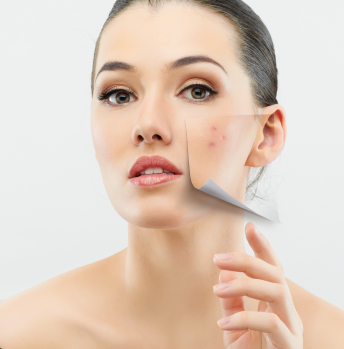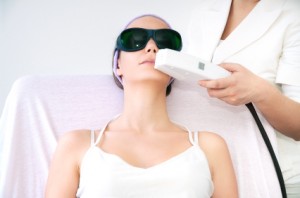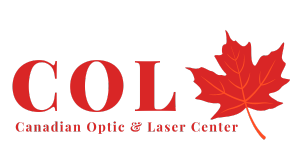What Is Acne?
Unfortunately, acne hits young people at a time when they most want to look their best. Acne can make you feel embarrassed and feel bad about yourself. It’s like a really bad joke is being played on us. Parents and older people might tell you that pimples are a part of growing up, and that you just shouldn’t worry about them, but if your acne or pimples are making you miserable, you should speak to your doctor because there are medical treatments that can help a lot. At COL clinic we can help you to pass and process this period of time with more confidence.

Acne is a state of the skin that shows up as different types of bumps. These bumps can be blackheads, whiteheads, pimples, or cysts. Teens get acne because of the hormonal changes that come with puberty. Acne is a disease that involves the oil glands of the skin. It is not dangerous, but can leave skin scars. The type of acne that a lot of teens get is called acne vulgaris which means “of the common type”.
What Are Acne Treatments?
Acne treatments include decreasing oil production, acceleration skin cell turnover, removing microbial contagion and reducing the irritation and inflammation. Most remedy acne treatments may not affect or client cannot see specific effect until 4-8 weeks, and the skin may become worse before it becomes improved. The doctor or dermatologist may recommend a prescription medication to apply on the skin (topical medication) or take by mouth (oral medication).
How Laser and Light Therapy work?
Laser and light-based therapies spread the deeper layers of skin without damaging the skin’s superficial layers. Laser treatment damages the oil (sebaceous) glands, mostly by high power lasers, and reduces oil production, mostly by low power lasers, and causing glands to produce less oil. Light therapy kills the bacteria that cause acne inflammation and irritation. These therapies can similarly advance skin texture and diminish the appearance of scars, wounds, and keloids, so they may be a good treatment selection for individuals with both active acne and acne scars. These therapies may be uncomfortable by high power lasers and may cause temporary skin problems that mimic severe sunburn, but there is no pain with low level laser therapy. Laser treatment or light therapy might be a part of an acne treatment plan. Rarely can a laser or light treatment alone clear acne. This type of treatment works best when used along with other acne treatment such as medicine applied to the skin.

When Can We Use Phototherapy?
Laser or light therapy may help when other acne treatments have not worked. Some clients who did not see clearer skin with strong acne medicine have seen results when a laser or light therapy was added to their treatment plan.
What Are the Results?
Outcomes are random and unpredictable. Lasers and other light treatments do not work for everyone. There is no way to know who will see clearer skin and how much the skin will clear with laser or light therapy. Most people see some clearing, but not 100% clearing. For example, people who receive blue light on average see 30% to 60% clearing after a series of treatments.
How Many Sessions of Treatment Are Needed?
To acquire the best results, series of treatments are needed. For example, you may need 1 or 2 treatments per week for a month. Each treatment usually lasts about 15 minutes. You also need touch up sessions when you have breaks outs.
What Are the Pre Treatment Cares?
It is best to come in without make-up, but you can remove your make-up here if you need to and you can reapply it right after the procedure. We prefer no sun tanning for a month prior to your treatment. There is virtually no downtime, and you may go right back to your work or your normal activities.
What Are the Results?
Good skin care helps to provide best results. To get the best, you need to practice good skin care. This is true for laser or light treatments as well. Results tend to be temporary or short term. To maintain the results, clients may need to use acne medication that they apply to the skin.
What Are the Side Effects?
Side effects are possible from lasers and other light therapies. After treatment, some people may experience redness, itching, and swelling. These can last for a few hours or a few days. A break out of acne is possible, and it happens because all bumps are activated at the same time and after that there will be a remission. Clients are usually advised to avoid sun before and during phototherapy treatment. After final results are achieved, patients need to use sunblock of SPF 30 or higher. The sunscreen used needs to block both UVA and UVB rays.
What Are the Aftercare Treatments?
-
-
- The treated zone may appear red after the session is complete. If your skin feels a little warm, apply a cool ice pack to the treated area when you get home. This will accelerate your skin’s recovery time after your laser treatment for acne.
- Try to only wash with cold or tepid water for the first day after treatment while your skin is in the recovery stage. Be gentle on your skin and avoid the use of strongly scented lotions or soaps, exfoliating creams and aggressive scrubbing to the treated area as this may cause you slight discomfort.
- The irritation will slowly diminish over the next 24-48 hours. In some cases it lasts up to 72 hours.
- 72 hours after the treatment, it is logical to avoid the following:
-
- The use of AHA (Alpha Hydroxy Acid) or Vitamin A products.
- Swimming pools and spas with multiple chemicals/chlorine.
- Activities that cause excessive perspiration.
-
- If treating the face, do not apply makeup the same day. Always apply SPF 30+ sunscreen every day to protect the skin from the sun.
* The results may vary from person to person.
